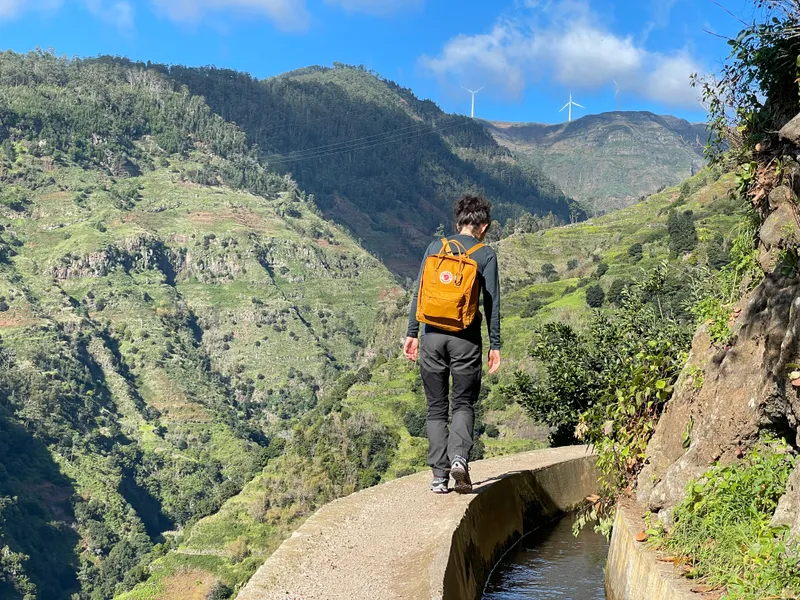Contrary to popular belief, fueled by the term “Fear of Heights”, Height Vertigo is not about imagining the bad things that could happen and being afraid of them. Height vertigo is not a fear, anxiety, or psychological condition. It is not just in your head.
Some people have height vertigo others don’t. Understanding height vertigo is important for both of them as it can save lives.
Understanding Height Vertigo
Our bodies are a sum of complex biological systems that all work together for our well-being. As each individual is unique, so are our bodies and the way they work. Maintaining the body’s balance is a job accomplished by a multitude of systems, not just one.
For some individuals, maintaining standing balance is highly dependent on the visual cues our brain receives through our eyes. This explains why everyone finds it harder to stand on one leg with their eyes closed. Those with increased visual dependence are more prone to have height vertigo.
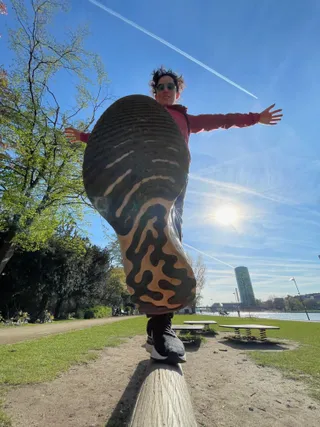
What happens with height vertigo is that your body is having a hard time maintaining its balance because of a lack of visual cues. When exposed to heights, the distance between you and the closest objects near you increases considerably and exceeds the threshold required by your brain to keep your balance. In other words, you literally start to lose your balance, you start having vertigo. You will feel a loss of equilibrium and the need to raise your hands to regain your balance as if you are walking on a beam.
Vertigo is just one of the symptoms a person with height vertigo gets when exposed to heights. Sometimes you will feel like an imaginary force is dragging you toward the edge, and your body literally leans that way. You might feel the need to crouch, crawl or kneel.
Fear of Heights
Sometimes the term “fear of heights” is used interchangeably with “height vertigo”. Some people use it as a synonym for the condition described above, but some only refer to anxiety caused by your thoughts. It is possible that some people only have a fear of heights, but not height vertigo, or they could have both.
Social Stigma
The lack of understanding of what height vertigo truly is, especially from those who don’t have this condition, leads to a lot of social stigmas. “Faint-hearted”, “only for the brave”, “it’s all in your head”, and so on are just some of the most common phrases you can hear.
Never try to push your limits thinking that you are overcoming a psychological fear. What you are feeling is real and you are putting yourself in danger by not listening to your body.
How to Cope with Height Vertigo
There are things that you can do in order to ease your height vertigo. First of all, keep away from sheer drops, obviously. There is nothing you can do to feel better if you are standing on the edge with nothing in front of you.
Having some sort of handrails helps, even though it doesn’t fix the problem completely. In exposed areas (even with handrails) it can be unpleasant if you look far away, over the handrails, while walking.
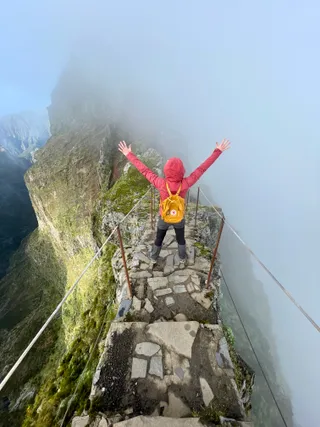
Here are some tips that you can try to do to reduce height vertigo:
- While walking, only look a few steps ahead of you, where the trail is. Do not look to your sides or in the distance.
- When you want to look in the distance first stop walking, then put your hand on a handrail (in order to have some spatial reference), and then look away in the distance. If there’s no handrail or something else in your close proximity to hold on to, then avoid looking in the distance.
- Don’t take photos while walking.
- If you stop to take photos, and you have to use both hands, remember that once you lower your phone you might get vertigo. Move slowly and try to change your gaze from the phone to a different object that is close to you, like handrails.
- Try to avoid crouching because you might get stuck in that position. Once you are in a crouch position it will be next to impossible to stand up again. Only crouch if that is the only option to prevent you from falling.
How Can You Treat Height Vertigo?
Some say that if you expose yourself to heights, then your body will get used to it. Controlled exposure is, well.. controlled. Anything that is controlled doesn’t cause vertigo to me, no matter the height. For example, I’ve been to adventure parks high up in the trees and zip lines, and I didn’t feel any vertigo, even if I had a bit of anxiety that slowly faded away. Personally, I doubt that height vertigo can be treated.
In my experience, controlled exposure might work if you have a fear of heights, in the form of anxiety, but not height vertigo. I also exposed myself to heights that cause me vertigo, in a slightly controlled extreme environment. We went glacier hiking with a guided group. We were all tied to each other, and to ice screws as well. In some areas, we were walking on sharp ice ridges with deep crevasses on both sides. The crevasses were so deep that you couldn’t see the bottom. Even though we were tied, we had nothing to hold on to.
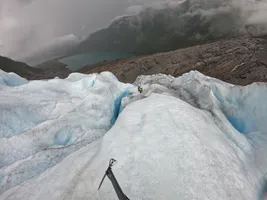
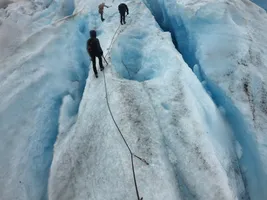
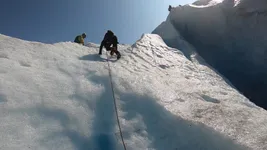
I had to push myself a lot to keep up with the group. I was not able to stop vertigo, but I learned how to minimise it by changing my behaviour. I learned where to look, and what moves to do or avoid doing. I was able to walk in a straight line without leaning too much to my sides. I physically hurt myself in the process without feeling any pain. My knees and my hand knuckles were all bruised and swollen from how much I’d been hitting them on the ice.
I shared with you above some of my tips, but I still don’t recommend you expose yourself to heights that cause you vertigo. Personally, I avoid exposing myself to heights as well, but we’re explorers and nature lovers. Sometimes we go hiking and end up on exposed areas that trigger me vertigo. If it’s too bad and I can’t reduce it in order to stay in balance, then we turn around. There’s no shame in turning around.
How to Simulate Vertigo
For those of you who don’t have height vertigo but want to understand how it feels, I recommend you to try a spinning tunnel (a.k.a vortex tunnel or rotating tunnel). Something like this can be found in amusement parks. This tunnel creates similar feelings of vertigo as people with height vertigo get when exposed to heights.
Be true to yourself, and don’t cheat. Walk through the tunnel as you normally walk. Look straight and around you, and take your eyes off the walkway and handrails.
In the end, I think that height vertigo is one of the body’s defence mechanism to prevent us from doing things that might get us killed.
Did you have a terrible experience with height vertigo that you want to share? I am sure that we can all learn from it. Please leave a comment below.
Related Travel Articles
- Travel Destination of The Year 2024 According to ChatGPT: Portugal
- Flying Business with Air France: A Comprehensive Review
- Top Travel Destinations for 2024: The Factors Influencing Your Choice
- The Best Gift Ideas for People Who Love To Travel
- Northern Lights Forecast - Aurora Borealis
- 7 Unique Travel Destinations for 2024
- The Best Travel Websites to Follow in 2024 for Researching & Planning a Trip
- How to Negotiate a Discount on Airbnb - 5 Messages That Work
- How to Take Photos of the Northern Lights with Your Phone Camera - Aurora Borealis

Writing free, independent and personal travel content since 2021. If you appreciate what we do, then you can return the favor by using the affiliate links below.
- Get your accommodations on Booking.com
- Buy your gear and gadgets from Amazon
- Book flights using Expedia
- Book activities on Get Your Guide
- Book guided trips on G Adventures
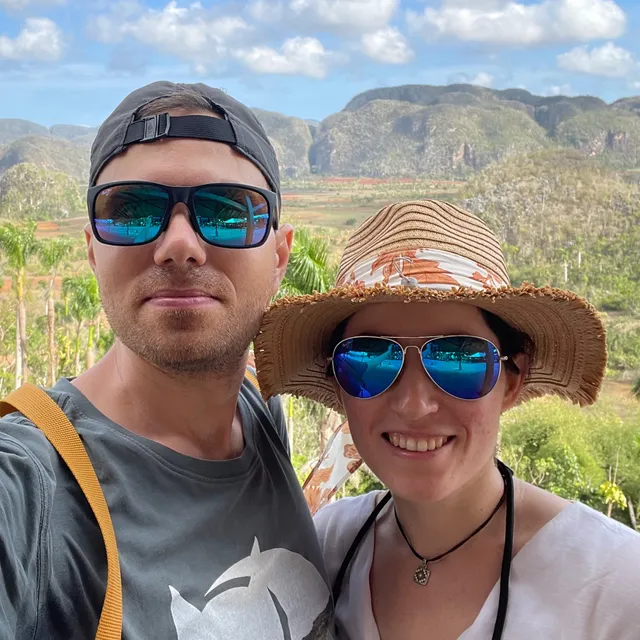
Writing free, independent and personal travel content since 2021. If you appreciate what we do, then you can return the favor by using the affiliate links below with no cost for you.
